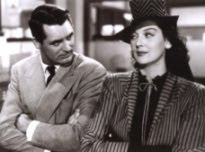Choice supporting roles followed.
Among them were "Raising Arizona," "The Big Easy," Punchline," "Burglar" and "Everybody's All-American," quintessential, laid-back '80s films that make one deeply appreciate - and, yes, seriously miss - the 1980s.
Hollywood seems incapable these days to produce straightforward, no-frill films of this variety.
Anyway, the rest of America discovered Goodman in 1988 as Dan Conner on the excellent sitcom, "Roseanne." The show's creator, Roseanne Barr, may have trained as a stand-up comic but she was no slouch as an actress. Still, she was savvy enough to surround herself with talent from Broadway (Goodman, Laurie Metcalf, Estelle Parsons and John Randolph), venerable movie people (Shelley Winters, Ned Beatty and even Tony Curtis), an up-and-coming hunk who could actually act (George Clooney), smart, cutting-edge comics (Martin Mull and Sandra Bernhardt) and terrific kid actors (Lecy Goranson, Sara Gilbert, Michael Fishman, Johnny Galecki and Stephen Dorff).
But, for me, Goodman's smooth, naturalistic performance as an average husband and dad was the titanic supporting structure of "Roseanne."
Now something of a household name, thanks to "Roseanne," Goodman continued to moonlight in supporting movie roles, but in the early '90s, something happened: Goodman started to score lead roles, beginning with Frank Marshall's "Arachnophobia" (1990). His name was suddenly above the title - for a while, at least.
I was reminded of this when I spotted a cable showing of "The Babe" in a TV listing. Goodman plays Babe Ruth in the 1992 Arthur Hiller film and it is inarguably his biggest screen role.
Around this time, Goodman had another lead role in Joe Dante's ”Matinee,” as well as starring parts in David S. Ward's "King Ralph" (opposite Peter O'Toole, no less), Brian Levant's "The Flintstones" and the Melanie Griffith-Don Johnson remake of "Born Yesterday" (in which Goodman replaced Nick Nolte in the Broderick Crawford role), directed by Luis Mandoki. He was also Bette Midler's leading man in "Stella," the now-forgotten re-do of "Stella Dallas."
And I can't ignore his star vocal turn as the furry James P. Sullivan, the imaginary friend of little Boo, in the heartwarming "Monsters, Inc." animation. Much like Dan Conner, Sullivan underlines Goodman's appeal as an actor - someone who inhabits a role so fully that he brings a cozy, lived-in feel to his line-readings, facial expressions and his movements which often seem almost choreographed.
For a big man, Goodman is incredibly light on his feet.
As dazzling as Goodman has been in his few starring roles, he's more in his element in smaller turns, particularly those for the Coen Brothers - the aforementioned "Raising Arizona," "The Hudsucker Proxy," "Barton Fink," "The Big Lebowski" and "O Brother, Where art Thou?" Exceptional.
But, currently, he seems comfortably ensconced back in supporting roles again.
More recently, Goodman has demonstrated just how invaluable he is in these roles in such titles as "The Artist," "The Monuments Men" (working for and with his "Roseanne" co-star, George Clooney), "Trumbo," the Coens' "Inside Llewyn Davis" and "Argo," for which he deserved an Oscar nomination every bit as much as his co-star Alan Arkin. What? A mere piddling Oscar nomination? Heck, give this man his own golden statuette already.
Note in Passing: When I was reviewing out of Sacramento, filmmaker David Zucker made a stop in 1988 to promote the film "Naked Gun: From the Files of Police Squad." He said that he was hoping to find material that would suit John Candy and I suggested a remake of the 1968 Philippe Noiret French charmer, ”Alexander” (aka "A Very Happy Alexander" / "Alexandre le bienheureux"), directed by Yves Robert. But I hastened to add that it would be a better fit for Goodman. Anyway, Zucker had never seen it. I had an old Beta copy and he still had a Beta player. So, Zucker borrowed my tape, later returning it by mail and confessing that he was unable to find financing for it with either Candy or Goodman in the role.
A missed opportunity.
* * * * *
~images~
~top: John Goodman as Dan Conner on "Roseanne"
~photography: ABC 1988 ©
~photography: ABC 1988 ©
still shot of Goodman in "True Stories"
~photography: Warner Bros. 1986 ©
* * * * *
~middle: movie poster for Universal's "The Babe"
* * * * *
~bottom: still shot of Sullivan and Boo in "Monsters, Inc."
* * * * *
~bottom: still shot of Sullivan and Boo in "Monsters, Inc."
~photography: Disney/Pixar 2001 ©
still shot of Goodman in "The Big Lebowski"
still shot of Goodman in "The Big Lebowski"
~photography: Gramercy Pictures 1998 ©



























